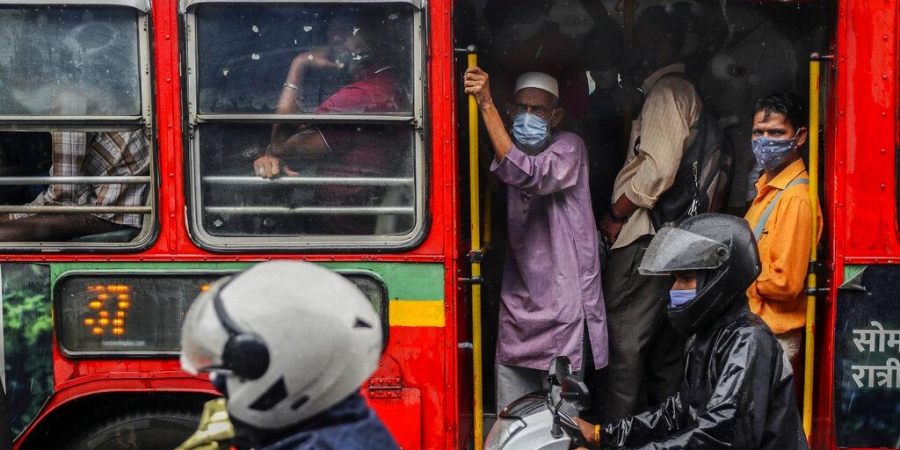
The findings of the fourth nationwide sero-survey provide useful insights on a possible next wave, opening of schools and targeted ramping up of vaccinations.
The fourth round of the nationwide seroprevalence survey has revealed that 67.6% of India’s population has antibodies against SARS-CoV-2. This sero-survey included those in the six-years-and-above population as well as healthcare workers. The seroprevalence in urban and rural areas are 69.6% and 66.7%; the difference was not statistically significant. The seroprevalence in the 6-17 years and adult population was very similar and when adjusted for vaccination, the difference was not statistically significant. The seroprevalence in those vaccinated was higher than those not vaccinated, a factor also reflected in the higher seroprevalence in the 45-plus age group (which started vaccination on March 1) in comparison to the 18-44 age group (for which vaccination started on May 1). The seroprevalence in healthcare workers was 85.2%, higher than any other subgroup. This survey was conducted in the same districts where the previous three sero-surveys were done, which makes comparisons internally valid.
Scientifically, antibodies against SARS-CoV-2 can be detected around 10-14 days after natural infection or the vaccination. As the samples for this sero-survey were collected in the last 10 days of June and first week of July, the findings capture the seroprevalence for around June 20 (10 days before the midpoint). Till June 20, India had reported three crore cases. For every officially reported Covid-19 case, there were about 28-30 unreported ones in the country, a pattern very similar to previous national surveys. From then to now, 13 lakh additional cases have been reported and around 12 crore additional vaccine shots have been administered. Therefore, the proportion of the population with antibodies is likely to have crossed 70% by July 20. The susceptible population in India remains around 30%, or about 40 crore.
The findings of the sero-survey are reassuring in some sense. The third sero-survey (Dec 2020-Jan 2021) reported that around 24% of India’s population had antibodies and 76% were susceptible. The high susceptible pool of people and highly transmissible Delta variant were responsible for the ferocious second wave. The susceptible pool is far smaller now compared to before the second wave. There are a few practical implications of the findings.
If the seroprevalence is adjusted for the vaccination in adult age sub-groups, it is very clear that children have a very similar or even higher rate of infections than the adults. A few sero-surveys including one conducted by AIIMS, New Delhi, has found that up to three-fourth of total children in the survey population had antibodies, well before the middle of the second wave of the pandemic. The proportion of susceptible children is likely to have gone down further since then. Alongside this, various analyses of hospitalised Covid-19 cases have pointed out that the share of children as a proportion of total hospital admission for the virus remains very low. These findings assure us that our children are protected and at low risk. They scientifically dispel the undue concern that children would be at excessive risk in subsequent waves. In fact, the findings of the national survey make a strong case for governments giving serious consideration to open schools with due planning and precautions. By July 2021, schools have been functioning in 170 countries across the world and evidence is piling up that with precautions, schools do not pose much risk to children. Evidence supports that benefits of children coming to school are far greater than any minimal risk associated. Even that small risk can be ameliorated with effective planning.
The findings provide some additional insight into the susceptible pool and extent of the next wave of Covid. Aggregate data shows that the susceptible pool at the national level is declining; however, it is difficult to assess whether and where there could be pockets of susceptible populations with larger pools. Therefore, it is still possible to have localised/district-specific and statewise rise in cases and new waves. Alongside, as the susceptible pool of people has come down to around 30% (in comparison to 76% before the second wave), the next wave would be far smaller than the second wave in India. Some of the unknowns that are impossible to predict are the emergence of a new variant and how it will respond to existing antibodies. Therefore, we can be assured of smaller waves but should be cautious enough to increase vaccination and follow Covid-appropriate behaviour as it takes a minimum of 4-6 weeks, generally even longer, to identify a new variant after it has emerged.
The findings of national surveys can and should be used by state authorities with available findings from local and state-specific surveys for targeted ramping up of vaccination and Covid-appropriate behaviour. If needed, additional sero-surveys should be conducted in identified high-priority districts for local interventions.
The seroprevalence in rural and urban populations have been found to be almost similar. The health infrastructure in rural areas has been weaker than urban settings and it may have an impact on case fatality rate and resulting deaths in India, with under-reporting highly debated in the country. The sero-survey data can be used by epidemiologists and disease modellers to provide better insight on excess deaths in India. There is likely a temptation among some to conclude that India is approaching herd or population immunity. However, there is a need for being cautious before arriving at any such conclusion as we know new variants can be more transmissible (for example, Delta can spread 50-70% faster). It is also known that as the transmissibility of a virus or pathogen increases, the herd immunity threshold goes up. Currently, the herd immunity threshold is being considered 85% or higher, which is further away. Furthermore, neither vaccination nor natural infection fully stop the likelihood of disease transmission. Therefore, having antibodies should not be seen as equivalent to having protection from getting infected or stopping the transmission.
The fourth nationwide sero-survey has provided important insights into the pandemic and the proportion of population affected. Now, it is for technical experts and policymakers to use this information for effective pandemic response and development of appropriate strategies.





















